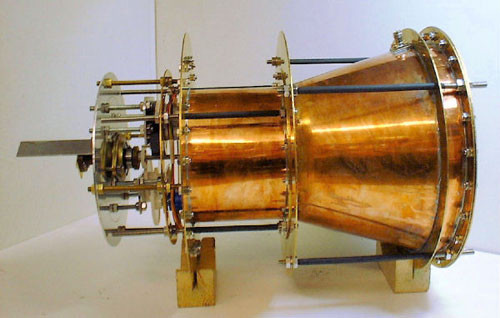EmDrive: China claims to have built 'Impossible Engine' that needs no fuel
Nasa has previously confirmed that the machine could work, but that they have no idea how.
China has reportedly been able to build its own version of the controversial "EmDrive" machine, which Nasa had tested and said that it might work.
EmDrive, also known as the 'Impossible Engine', is an electromagnetic space propulsion technology based engine that, in theory, produces thrust but without making use of any propellant, so it also does not leave behind any exhaust. Such a machine cannot work, says Nasa because of the fundamental physics law of conservation of momentum.
HuffPost citing a video by China's Central Television state broadcaster (CCTV) reported that the China Academy of Space Technology (CAST) has successfully built a working model.
The CCTV video claimed that not only did a CAST team led by Dr Chen Yue build a fully functioning and working model of this engine but also come up with their own version of the machine.
According to the HuffPost report, Dr Yue's team was able to produce 1.2 millinewtons per kilowatt thrust in vacuum.
EmDrive was conceptualised by British physicist Roger Shawyer who in an interview with IBTimes UK last year said, "There are plenty of competent organisations in many countries who have been supporting my work over the past few years and plenty of other people including the Chinese have proved it, so it's not a surprise to me."

In spite of the fact that Boeing licensed the technology and Nasa tested it, the EmDrive continued to be a thing of both mystery and ridicule.
According to the laws of physics, for an object to move one way, it has to push another object in the opposite direction with equal force. It is closely linked to Newton's third law that speaks of actions having opposite and equal reactions.
Nasa had earlier said that there was scepticism about the way the machine could work because there would be nothing to balance the change in momentum of the machine should there be acceleration, because there is no exhaust.
A spacecraft that is powered by the EmDrive could, it was reported, could cut short long journeys, like to Mars, for example, down to a few weeks instead of years.
As there is no official announcement from either CAST or the Chinese government on this achievement, so there is no real way to tell if the claims are valid or not.
If it is real, then it could, as Shawyer said, revolutionise the way we travel. "The aerospace industry needs to sit up and rethink things. The big aerospace companies have designed their last big jets, that's one of the implications. No one will be flying big jets for long-haul transportation in 20 years, and we won't be needing runways either."
© Copyright IBTimes 2025. All rights reserved.





















